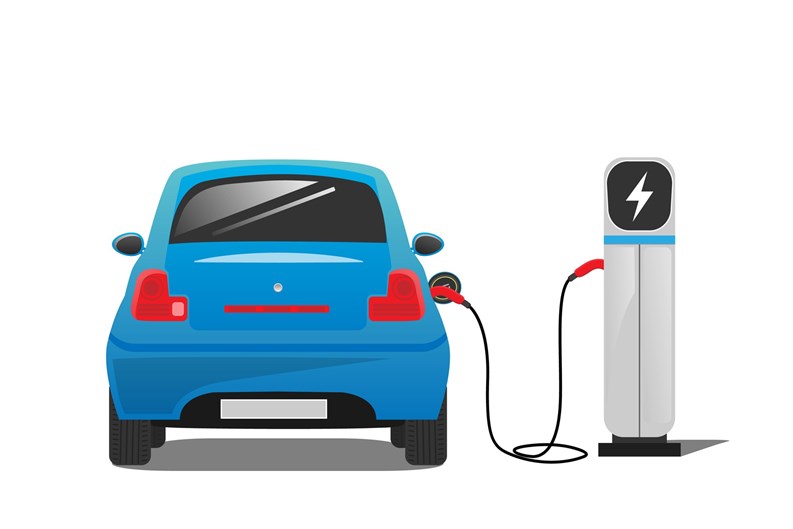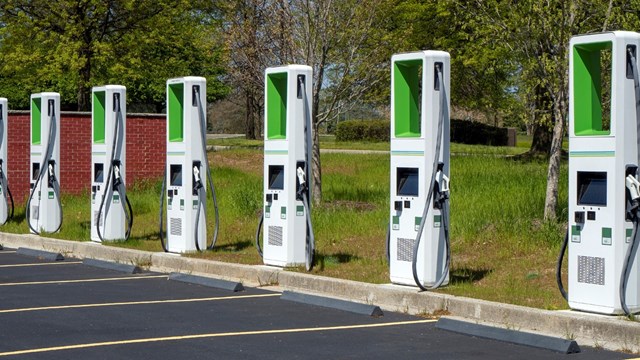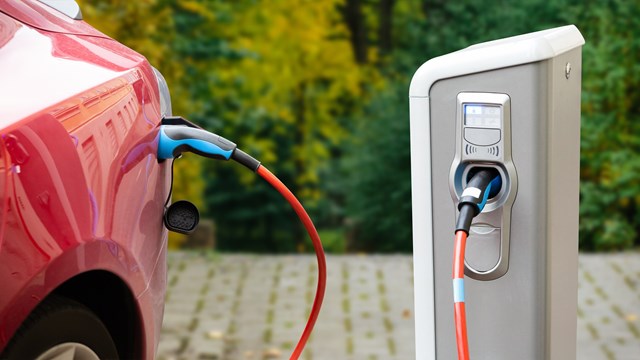Among the many efforts underway to stem the oncoming tide of climate-related catastrophe is the increasing use of electric vehicles (EVs). While gas-powered cars are still the overwhelming majority of vehicles on the roads, EV technology is fast improving, and consumers are taking them seriously as an alternative to older, more polluting options. As more drivers switch to EVs, however, multifamily buildings and associations with parking facilities must address those drivers’ need for electric vehicle charging stations (EVCSs) to juice up those vehicles. Indeed, EV charging stations are fast becoming a much-sought-after amenity, if not an outright necessity. “There’s not a single topic at any building more discussed than electric charging stations,” says Marty Moran, vice president at The Building Group, a management firm based in Chicago.
New vs. Used
Perhaps the most immediate question when it comes to EV charging capabilities relates to existing versus to-be-built or under construction properties. According to Matt Resnick, director of project management for AKAM Management, with offices in New York and Florida, “New buildings should absolutely consider providing this as an amenity - the best time to plan for and install electric vehicle charging stations is during initial construction.”
As for existing buildings, “There are a variety of factors we take into consideration when a building informs us of its interest in EVCSs,” says Resnick. “Initially, we take into account how many parking spots currently exist, the ownership or leasing model of the garage, and if there is available and sufficient power onsite to service the charging ports.”
If the garage is leased to an operator, Resnick says that “The third-party vendor may be willing to manage user charges, with a potential revenue share going to the association. They may accept all major credit cards, or have their own special payment card that users reload as needed.”
“In our experience, costs can be borne by individual owners, associations or shared,” says Moran. The cost of ‘fueling up’ may be charged directly to the user, or in some cases may be billed through the association on monthly statements. “In one case, where the users pay an outside provider, the association receives a percentage of the profit.”
Resident Demand
The deciding factor in providing charging stations in existing garage facilities is the level of demand from residents. How many people need it? According to Resnick, “AKAM manages over 300 properties where electric vehicle purchases are on the rise. In turn, more garages and properties are considering adding this as a feature, and many already have begun to do it. In terms of demand, despite the coronavirus pandemic electric vehicle purchases rose more than 30% in 2020. Analytics firm Blastpoint is projecting a 71% increase for 2021, despite significantly less car use with people working from home and restricting travel. Blastpoint’s report speculates that shorter drive times increased the appeal of electric vehicles, which are more limited in range than hybrid or traditional engine cars.”
Installation & Cost
As more people purchase EVs, pressure is being put on buildings to provide the infrastructure to support the change. “For most boards,” says Resnick, “the issue is where to put the units. Based on the current incentives, we’re recommending that our clients install EV chargers based on future expected demand, rather than on today's demand.”
There are three different levels of charging stations that provide different charging speeds for electric vehicles.
Level 2 is the type most commonly being installed in condominium garages and public spaces. They charge more rapidly than Level 1 but aren’t as fast as
Level 3, which is direct current, and what you might see at a Tesla charging station or similar large charging facility.
Fred Silver, vice president of CalStart, a non-profit in the electric vehicle industry, has been a major contributor to the development of electric vehicles, and has consulted with providers of charging stations nationally and around the world, and explains that the installation of EVCSs in private single-family homes is a relatively simple undertaking: “Units are easily installed in existing garage areas or outside the individual property. That makes the choice of electric vehicles and their accompanying charging stations a simple choice for HOAs composed of single-family homes. In communities that have parking facilities - particularly if parking spaces aren’t assigned to specific owners - or in buildings with indoor garages, the logistics become more complicated.”
“The main problem is the cost of bringing the electric service to the specific spot,” Silver continues. “This will generally involve cutting concrete, which can be quite expensive. The farther the parking space is from the source of power, the more it will cost.” Cutting concrete and laying pipe through which electric lines will run to the charger at a specific parking space can run into the thousands of dollars. According to Silver, it could be as much as $15,000 per charger.
The Electric Bill
The logistics of how to bill for the electricity used by EVCSs also remains a challenge. If the building decides to take on the expense, the stations could be billed by use - similar to the way a third-party vendor would handle it. Another option is for users to sign up and be billed a flat monthly rate. Some months, the user may come out ahead in a flat fee arrangement, but the expectation is that it will balance out over time. A flat fee arrangement is best if the stations are not available to anyone but building residents. It’s also important to remember that adding stations to the parking garage might require shuffling of parking spaces within the garage. Either way, there may be a small revenue opportunity for a building that installs EVCSs.
Electric vehicle manufacture is only going to increase as people search for cleaner, more fuel-efficient vehicles. Even if your building doesn’t have a parking facility, your board may be able to work with the owners of whatever facility you do use to provide that benefit to your residents. Savvy boards are looking to that future of EVs and planning to capitalize on that highly-desired charging station amenity.







Leave a Comment